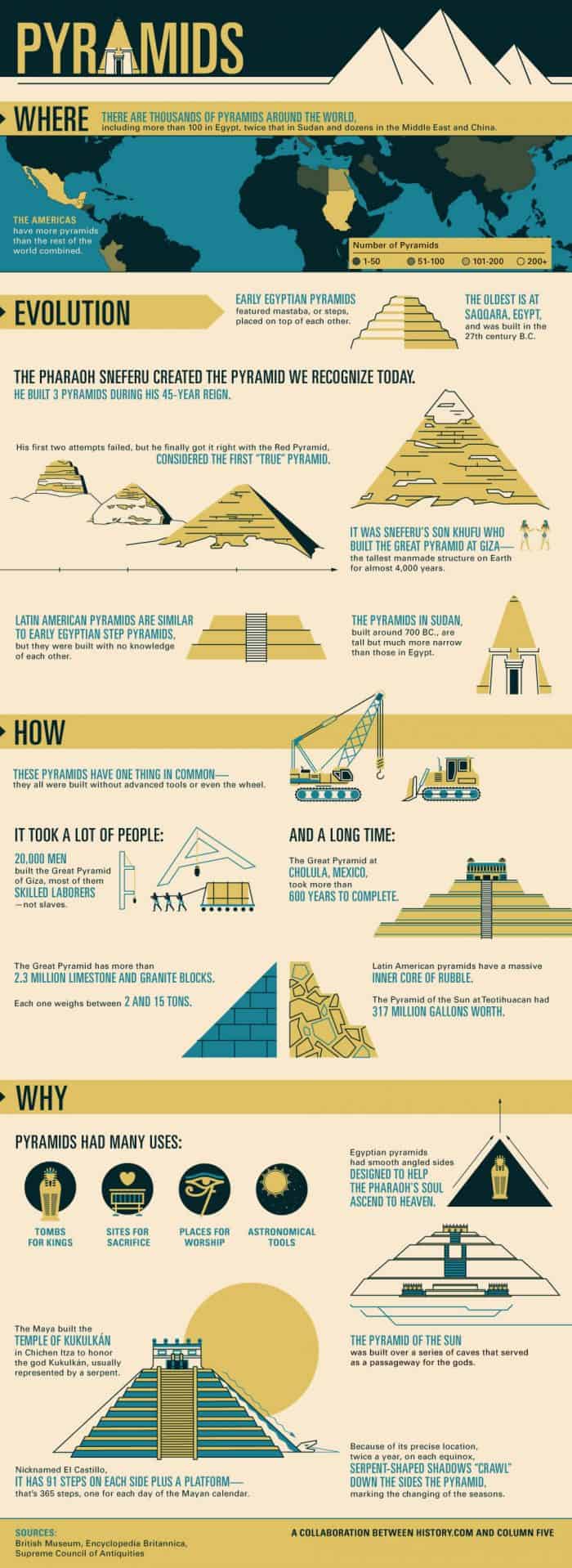
Whenever one thinks about pyramids, the first thing that comes to mind tends to be the ancient pyramids in Egypt. While those are indeed the first pyramids to stand up to the test of time, the real deal is that there are hundreds of them all around the world in places such as Sudan, the Middles East, China, and the Americas. Practically anywhere with historically advanced engineering skills have seen the construction of pyramids.
As amazing as they are, pyramids are not only one of the oldest and largest existing marvels of ancient civilizations, but also, these civilizations managed to come up with these feats on their own! We can tell because—based on their design and construction methods—there don’t seem to be any connection between each other.
There are some things that pyramids do have in common though: There were highly venerated sites at the top of their respective civilization, they were either tombs for kings, sacrificial sites, or places of worship, and—as it has been revealed in recent years—they were not built by slaves as we’ve been told. Evidence keeps being discovered that their builders were indeed paid and skillful laborers who were following very precise instructions from their designers, because—if you think about it—that’s the only way these colossal structures were occasionally built following very accurate astronomical patterns. The best example of this is the Pyramid of KukulKán, which shows snake-shaped shadows climbing up or down their stairs every solstice.



